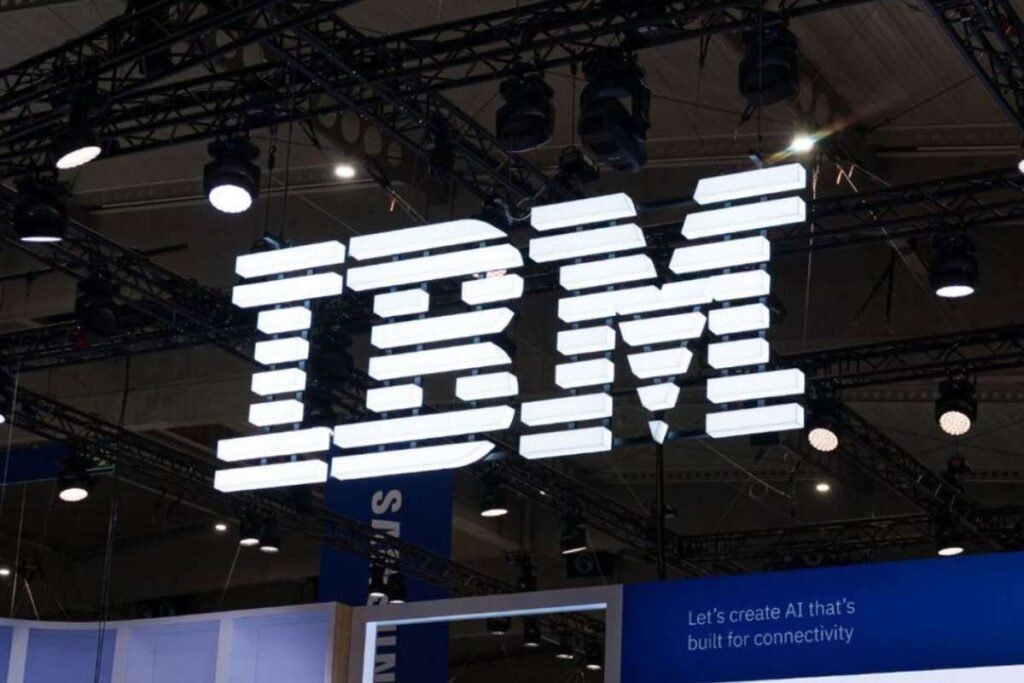In 2025, hiring the right talent is tougher than ever. On average, a single job opening receives over 250 applications, yet only about 2% of candidates make it to the final hire. Traditional manual hiring processes can take weeks or even months, often leading to lost opportunities and increased recruitment costs.
The best Applicant Tracking Systems (ATS) are changing the game. These smart platforms automate tasks like posting jobs, screening resumes, and scheduling interviews, saving HR teams hours of repetitive work each week. According to insights from People Managing People’s ATS reviews, companies using ATS see faster hiring cycles, better candidate matches, and a smoother overall recruitment process. Simply put, ATS doesn’t just make hiring easier; it makes it smarter.
What Is an Applicant Tracking System (ATS)?
An Applicant Tracking System is a specialized software designed to simplify and automate the hiring process. Instead of manually sorting through hundreds of resumes or juggling spreadsheets, recruiters can rely on the best applicant tracking systems to handle repetitive tasks, making hiring faster and more efficient.
Core Functions of an ATS:
- Job Posting and Distribution: Instantly post job openings across multiple platforms and social media channels, reaching a wider pool of candidates without extra effort.
- Resume Parsing and Candidate Screening: Automatically scan resumes, extract key information, and rank candidates based on skills, experience, and fit, reducing hours of manual review.
- Interview Scheduling and Feedback Collection: Coordinate interview times seamlessly and gather structured feedback from interviewers, keeping the process organized and transparent.
- Onboarding and Compliance Tracking: Manage new hire documentation, background checks, and compliance requirements to ensure a smooth transition from candidate to employee.
These functions highlight why the best applicant tracking systems are not just tools but essential recruitment partners.
Key Benefits of Using an ATS:
- Reduces Time-to-Hire: Streamlines tasks, allowing HR teams to fill positions faster and reduce recruitment delays.
- Improves Candidate Experience: Keeps candidates informed and engaged throughout the hiring process, boosting employer reputation.
- Enhances Data-Driven Decision Making: Provides actionable insights and reports, helping organizations make smarter hiring choices and identify trends.
In short, the best applicant tracking systems serve as the backbone of modern recruitment, enabling precision and speed.
Criteria for Selecting the Best ATS
Choosing the right Applicant Tracking System (ATS) can make or break your recruitment strategy. The best applicant tracking systems excel because they balance efficiency, ease of use, and long-term scalability.
Key Considerations When Selecting an ATS:
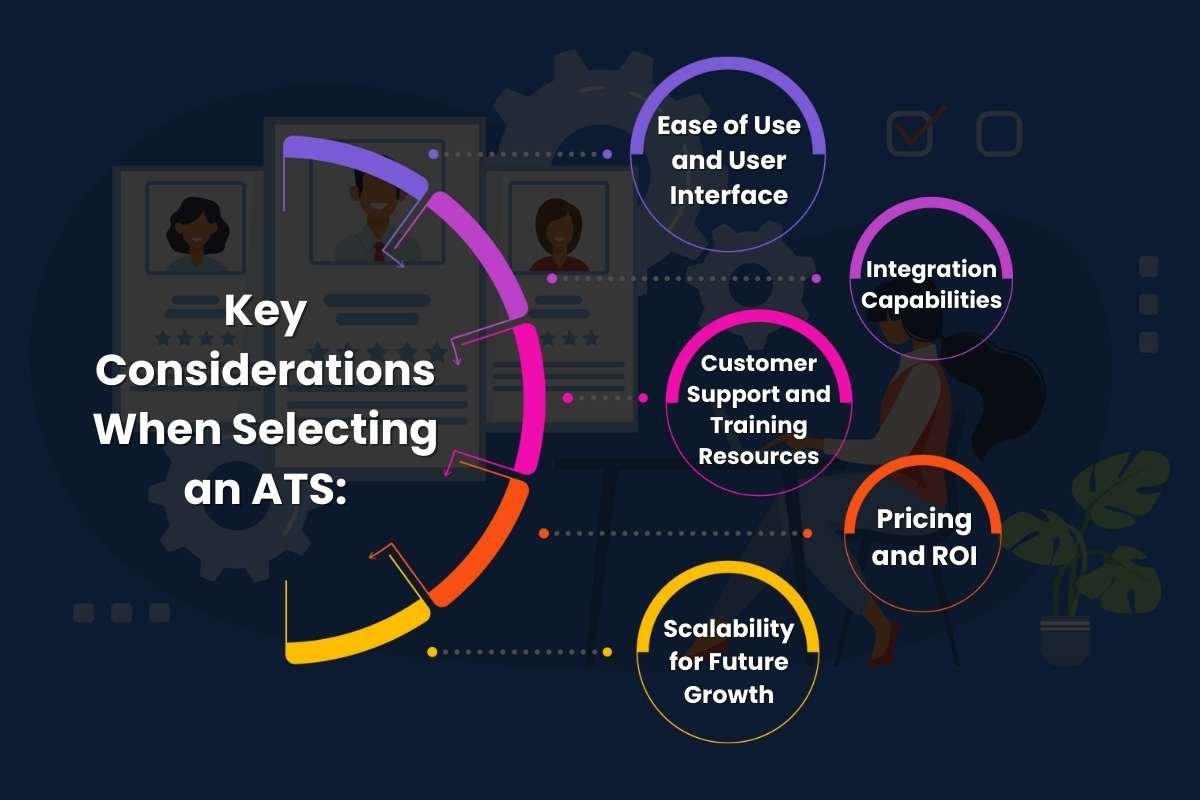
1. Ease of Use and User Interface
A cluttered or complicated system slows down your hiring team. Look for platforms that are intuitive, easy to navigate, and minimize training time. Studies show that recruiters spend up to 30% less time on ATS platforms with user-friendly interfaces.
2. Integration Capabilities
Your ATS should seamlessly connect with other HR tools like payroll software, performance management systems, and communication platforms. Integrated systems reduce manual data entry and ensure a smoother workflow.
3. Scalability for Future Growth
The right ATS grows with your organization. Whether you’re hiring 10 or 1,000 employees, the platform should handle increasing workloads without slowing down recruitment efficiency.
4. Customer Support and Training Resources
Even the best software can falter without proper support. Responsive customer service and thorough training materials help your team get the most out of the ATS.
5. Pricing and ROI
Cost matters, but value matters more. Consider not just subscription fees, but also the time saved, improved candidate quality, and reduced hiring errors. An ATS that offers measurable ROI can quickly pay for itself in saved resources.
Kim Behnke emphasizes that the most effective ATS is one that aligns closely with your organization’s specific needs rather than just offering a long list of features. A carefully selected system can transform recruitment into a strategic advantage, improving both speed and quality of hires.
Experts agree that the best applicant tracking systems align with organizational needs rather than overwhelming recruiters with unnecessary features.
Top 15 Best Applicant Tracking Systems of 2025
Selecting the right ATS is crucial for hiring efficiency. Here’s a curated list of the best applicant tracking systems in 2025, chosen for their features, user feedback, and market reputation:
1. Rippling: Best for Pre-Built Pipeline Templates
- Ready-to-use recruitment templates to streamline workflows
- Automated onboarding and HR integrations
- Customizable dashboards for hiring analytics
Rippling simplifies recruitment workflows with ready-to-use templates, automated onboarding, and seamless HR integrations, making it ideal for fast-growing companies looking for speed and consistency.
Example: A fast-growing fintech startup in San Francisco utilized Rippling’s pre-built recruitment pipelines to onboard over 50 employees in just one month. This streamlined process reduced manual coordination and allowed HR to focus on candidate engagement instead of administrative tasks.
2. Pinpoint: Ideal for In-House Talent Acquisition
- Collaboration tools for HR teams and hiring managers
- Customizable workflows and candidate pipelines
- Advanced reporting and analytics to track recruitment performance
Designed for internal recruitment teams, Pinpoint offers strong collaboration features, customizable workflows, and detailed reporting, helping in-house teams attract and retain top talent efficiently.
Example: A London-based tech company adopted Pinpoint to manage in-house recruitment, cutting their candidate review time from 15 days to 7 days. The platform’s collaborative pipelines allowed hiring managers to share feedback in real-time, improving overall decision-making efficiency.
3. BambooHR®: Offers Automated Offers & Analytics
- Automated generation of offer letters and documents
- Candidate tracking and reporting analytics
- Intuitive interface suitable for SMBs
BambooHR is often ranked among the best applicant tracking systems because it automates offer letters, tracks applicant progress, and provides actionable analytics. Its intuitive interface makes it a reliable choice for small to medium-sized businesses seeking efficient hiring with minimal manual effort.
Example: A boutique marketing agency used BambooHR to automate offer letters and track hiring analytics. This reduced human errors in offers to zero and shortened the hiring cycle by 25%, allowing the team to focus on creative strategy rather than paperwork.
4. Greenhouse: Excels in Sourcing Qualified Candidates
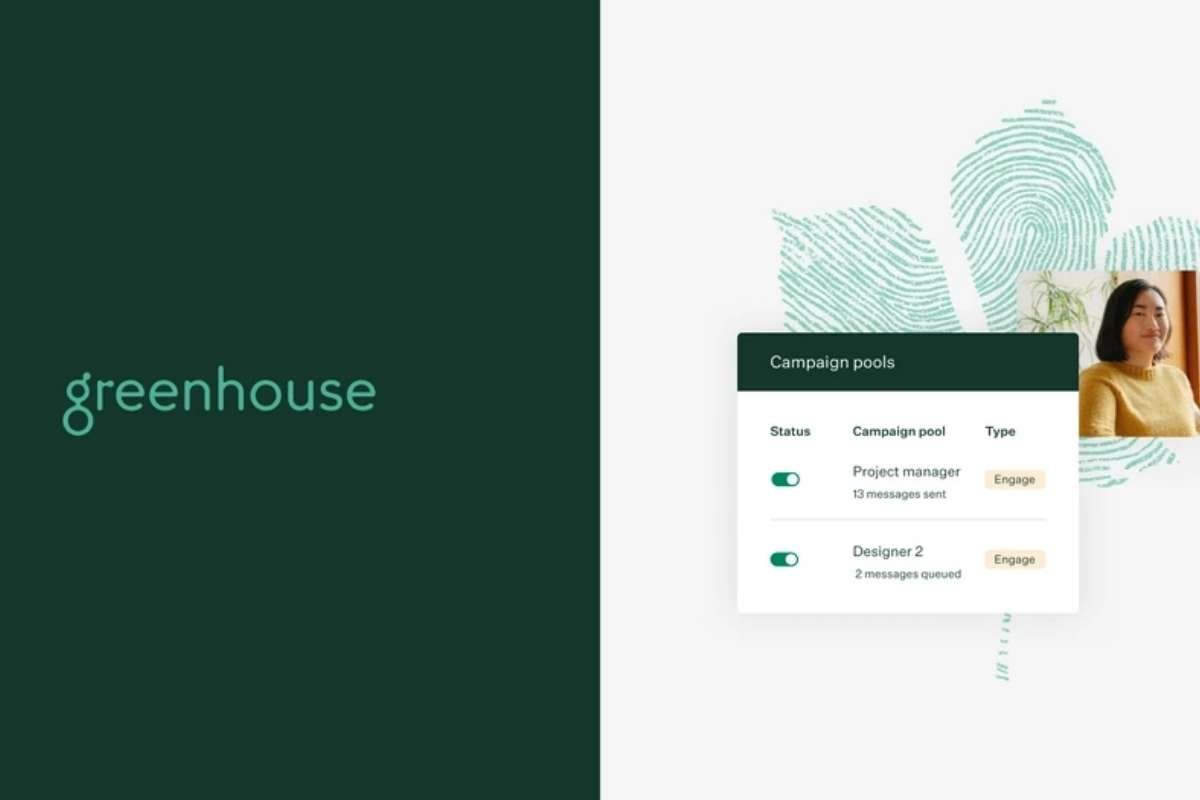
- Structured recruiting and interview kits
- Candidate nurturing and automated communications
- Pipeline optimization and data-driven hiring insights
Greenhouse focuses on structured recruiting, candidate nurturing, and pipeline optimization. Its robust analytics help teams identify bottlenecks and improve the quality of hires.
Example: An AI startup implemented Greenhouse to structure interviews and automate candidate scoring. Within six months, they increased their quality-of-hire metric by 30%, as top talent was identified faster and interview feedback was consistently recorded for every candidate.
5. Tracker: Combines ATS and CRM Functionalities
- Combines the best applicant tracking systems with candidate relationship management
- Tracks candidate engagement and communication history
- Helps recruiters build long-term talent pipelines
Tracker combines traditional ATS features with CRM capabilities, enabling recruiters to manage candidate relationships proactively and track engagement throughout the hiring journey.
Example: A recruitment agency in New York used Tracker to manage candidate relationships, leading to a 50% increase in candidate placements over a year. The integrated ATS and CRM functionalities allowed for better candidate engagement and streamlined recruitment processes.
6. Workday Recruiting: Enterprise-Level Hiring
- Integrates seamlessly with HR, payroll, and talent management
- Scalable solution for large organizations
- Advanced reporting dashboards and analytics
Workday is an enterprise-grade solution that integrates recruiting with HR, payroll, and talent management. It ranks among the best applicant tracking systems for enterprises that need a highly scalable, secure, and centralized hiring process. Designed for large organizations, it simplifies complex recruitment workflows and provides advanced analytics for better decision-making.
Example: A global pharmaceutical company integrated Workday Recruiting across multiple locations, reducing compliance errors by 64% and centralizing global recruitment data. The platform’s scalability and security features made it ideal for complex workflows and multi-location hiring.
Also Read:
- This Best Recruiting CRM Software Might Be the Key to Cutting Your Hiring Costs in Half
- Empowering Education: Exploring the Best Free Learning Management Systems
7. Lever: Collaborative Hiring
- Facilitates team-based feedback and decision-making
- Structured interview kits and scorecards
- Analytics dashboards for performance tracking
Lever emphasizes team-based hiring, offering collaborative feedback features, structured interview kits, and reporting dashboards, helping companies make informed, data-driven hiring decisions.
Example: A SaaS company used Lever’s collaborative hiring features, allowing multiple teams to provide structured feedback, which cut decision-making time by 35%. The platform’s user-friendly interface and real-time collaboration tools enhanced the hiring process.
8. JazzHR: SMB-Focused Hiring
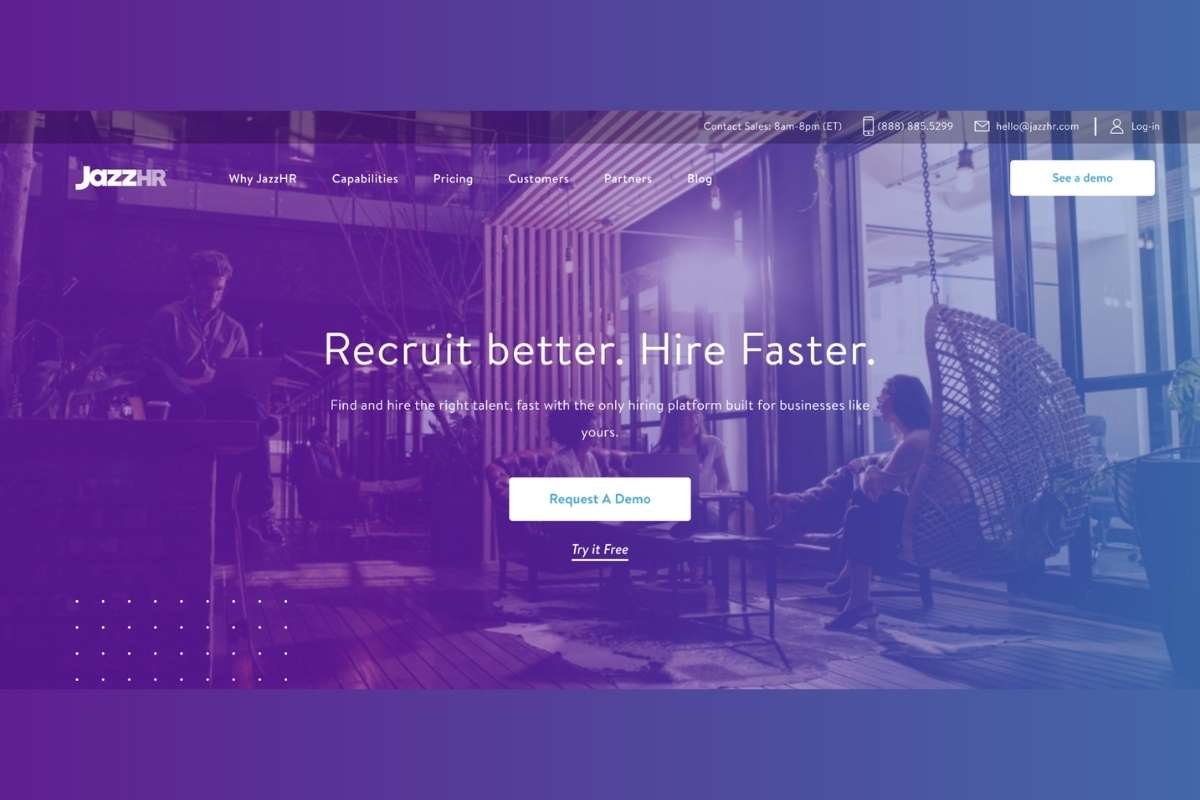
- Affordable and feature-rich solution for small and medium businesses
- Job posting, applicant tracking, and automated workflows
- Candidate sourcing and communication tools
JazzHR provides affordable and feature-rich solutions for small and medium businesses, including reporting tools that simplify the entire recruitment process. It is considered as the best applicant tracking system for enterprises.
Example: A small e-commerce startup leveraged JazzHR to manage seasonal hiring, successfully filling 30 roles in two weeks during peak demand. The platform’s affordability and ease of use made it a perfect fit for small to medium-sized businesses.
9. SmartRecruiters: Global Recruitment
- Supports multi-location and international hiring
- Automated workflows and compliance tracking
- Talent analytics and reporting for data-driven decisions
SmartRecruiters is often ranked among the best applicant tracking systems because of its ability to support large-scale, multi-location hiring. It offers automated workflows, advanced talent analytics, and global compliance features, making it especially valuable for international companies with diverse hiring needs.
Example: An international logistics company used SmartRecruiters to coordinate hiring across five countries, ensuring compliance and streamlining multi-location recruitment. The platform’s global reach and compliance features facilitated efficient international hiring.
10. Jobvite: Candidate Engagement
- Automated candidate nurturing and follow-ups
- Social recruiting and referral management
- Workflow optimization to reduce hiring delays
Jobvite combines applicant tracking with strong candidate engagement tools, such as automated nurturing, social recruiting, and workflow optimization to enhance candidate experience.
Example: With 98% open rates and an average response time of just 90 seconds, candidate texting is the most effective way to communicate with candidates. The platform’s referral management and social recruiting features enhanced candidate sourcing.
11. iCIMS: Scalable Enterprise ATS
- Flexible and customizable for large organizations
- Strong reporting and analytics capabilities
- Onboarding tools and workflow automation
iCIMS offers flexible and customizable solutions for large organizations. Its ATS includes robust reporting, onboarding tools, and integration capabilities to support complex recruitment processes.
Example: A Fortune 500 retail chain adopted iCIMS for enterprise recruitment, enabling over 2,000 hires annually with a fully automated onboarding workflow. The platform’s scalability and customization options made it suitable for large organizations.
12. Zoho Recruit: End-to-End Automation
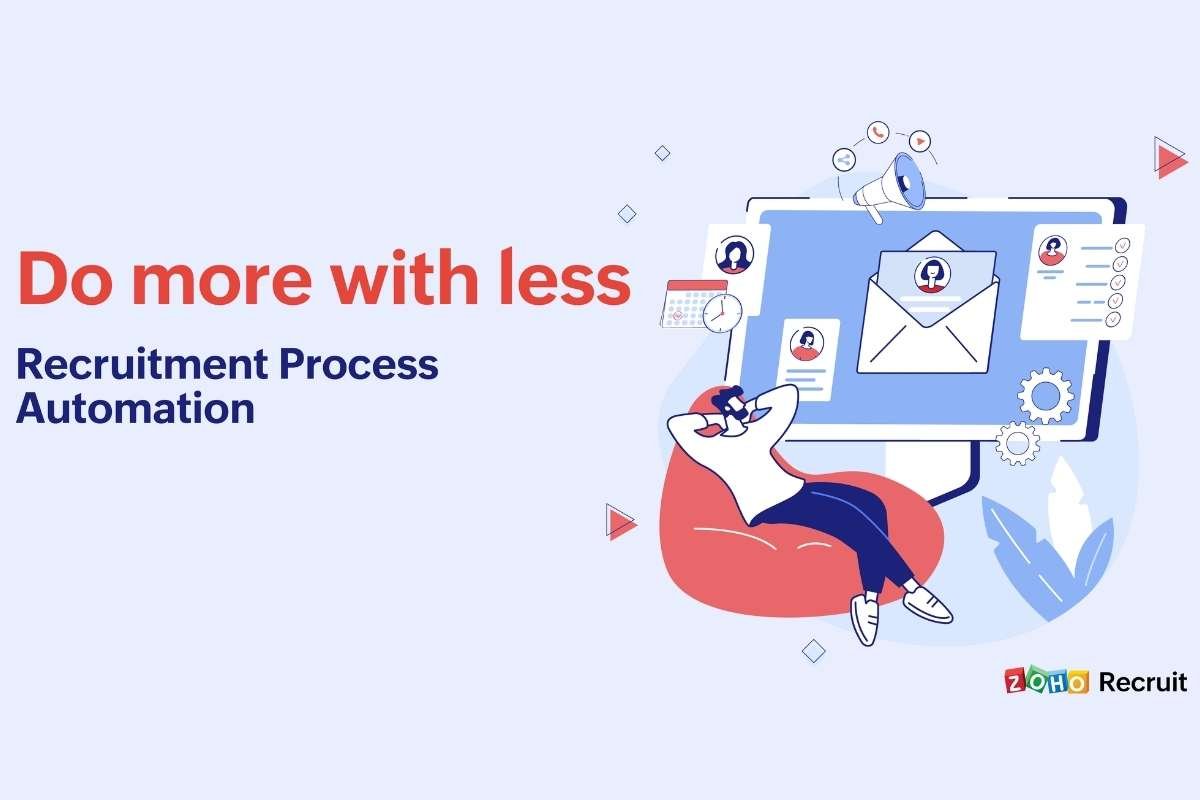
- Affordable, fully-featured platform for various business sizes
- Resume parsing and candidate tracking
- Workflow automation and reporting
Zoho Recruit is one of the best applicant tracking systems for businesses looking for a balance of affordability and functionality. It provides resume parsing, candidate tracking, and workflow automation, making it versatile for small, mid-sized, and even large organizations.
Example: A mid-sized IT consultancy used Zoho Recruit to automate candidate tracking and interviews, cutting manual administrative tasks by 70%. The platform’s resume parsing and interview scheduling features streamlined the recruitment process.
13. Bullhorn: Recruiting + CRM Integration
- Integrates ATS with CRM for staffing agencies
- Manages client and candidate relationships efficiently
- Pipeline tracking and communication management
Bullhorn is ideal for staffing agencies, integrating the best applicant tracking systems with CRM features. It helps manage client and candidate relationships efficiently, streamlining placements.
Example: A staffing agency in Chicago integrated Bullhorn, allowing recruiters to manage client and candidate pipelines efficiently, which boosted placements by 35%. The ATS and CRM integration facilitated better communication and relationship management.
14. SAP SuccessFactors: Enterprise HR Integration
- Advanced analytics for strategic hiring decisions
- Global compliance support for large organizations
- Seamless integration with other HR and enterprise tools
SAP SuccessFactors offers a comprehensive HR suite, including recruiting, onboarding, and talent management tools. It’s integrated analytics support strategic, data-driven hiring decisions.
Example: A multinational manufacturing company implemented SAP SuccessFactors to unify recruitment and talent management, reducing time-to-hire by 25% globally. The platform’s comprehensive HR suite ensured seamless integration across departments.
15. Avature: Customizable Workflow
- Highly flexible and fully customizable workflows
- Advanced reporting and analytics tools
- Candidate relationship management and engagement tracking
Avature stands out among the best applicant tracking systems for its flexibility and customization. It provides advanced workflow management, candidate relationship tracking, and reporting tools tailored for organizations with complex hiring needs.
Example: A large consulting firm used Avature to customize complex recruitment workflows across multiple departments, improving hiring efficiency and tracking talent pipelines more effectively. The platform’s flexibility allowed for tailored recruitment processes.
Also Read:
- Top Human Resource Solutions for Streamlining HR Operations in 2025
- 6 Best HR Software for Small Businesses to Simplify Operations
- Best Billing Software – Your Invoicing Companion
Future Trends in Applicant Tracking Systems
Recruitment technology has evolved rapidly, and the best applicant tracking systems are at the center of this transformation. As we move through 2025, ATS platforms are no longer just organizational tools; they are intelligent hiring partners powered by data, automation, and artificial intelligence. Let’s look at the trends redefining the future of talent acquisition.
1. Artificial Intelligence (AI) & Machine Learning
AI is reshaping how recruiters identify and engage top talent. Modern ATS platforms now:
- Use predictive analytics to identify candidates most likely to succeed in a role.
- Automate resume screening to eliminate bias and reduce manual workload.
- Suggest job descriptions optimized for better candidate attraction.
According to Deloitte, organizations using AI-driven ATS report a 30% improvement in candidate matching and a 25% reduction in bad hires.
2. Predictive Hiring Analytics
Recruiters are moving from reactive hiring to proactive talent planning. Advanced ATS systems track:
- Historical hiring patterns
- Turnover rates
- Candidate performance data
This enables HR teams to forecast future hiring needs and build stronger talent pipelines before demand spikes.
3. Enhanced Candidate Experience
Top talent often decides whether to join an organization based on their recruitment journey. ATS platforms are now prioritizing:
- Chatbots for instant candidate communication
- Personalized candidate portals with real-time updates
- Mobile-first application processes
58% of job seekers say a poor hiring experience can make them decline an offer, even if the role is attractive.
Conclusion
In today’s competitive job market, the difference between hiring the right talent and losing them to a competitor often comes down to efficiency, experience, and data-driven decision-making. The best applicant tracking systems are no longer optional; they are essential. From automating repetitive tasks and reducing time-to-hire to delivering predictive insights and fostering inclusivity, ATS platforms are transforming recruitment into a strategic advantage.
Whether you’re a startup trying to scale quickly, a mid-sized business looking to optimize costs, or a global enterprise managing high-volume hiring, there’s an ATS tailored to your needs. The key lies in choosing a solution that aligns with your growth plans, integrates seamlessly with your existing tools, and enhances both recruiter productivity and candidate experience.
With studies showing that businesses leveraging ATS solutions reduce hiring costs by up to 30% while improving employee retention rates, the case for adopting one has never been stronger.
As the future of work evolves, organizations that invest in the best applicant tracking systems will not only keep pace with change but also stay ahead by building agile, diverse, and high-performing teams.
Now it’s your turn: Evaluate your hiring needs, explore your options, and choose the ATS that will empower your organization to thrive in 2025 and beyond.






